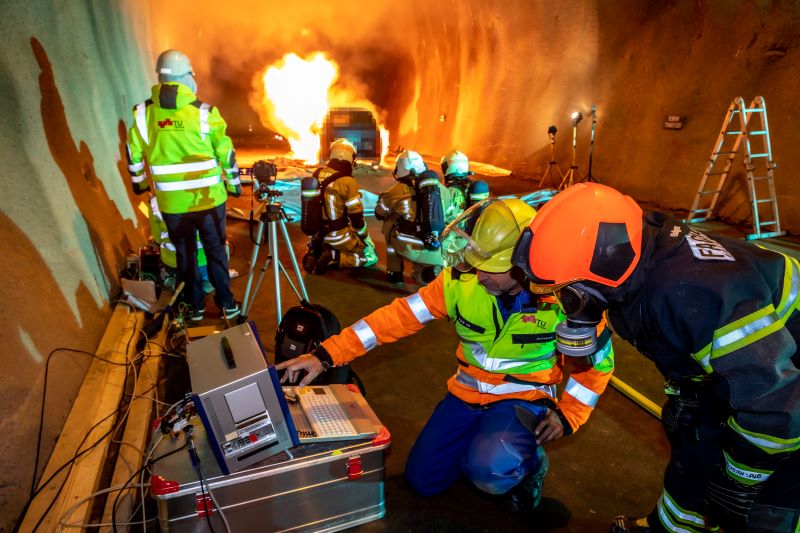BRAFA – Fire Effects of Vehicles with Alternative Drive Systems
Duration: 2019 - 2021
Location: Styria, Austria
Category: research project
Client: Verkehrsinfrastrukturforschung (VIF2018)
Description of project
The actual potential danger in the event of an accident with an e-car is still relatively unknown, but unsettling images of e-vehicles on fire are already widespread. We know that the energy storage systems of e-vehicles based on lithium-ion technology behave differently than conventional car engines in the event of a fire. But what exactly happens when e-vehicles catch fire in a tunnel? How hot does it get and what gases are produced? What dangers are there for people who are in the tunnel at the time of the accident? What risks are emergency personnel exposed to? What damage is there to the tunnel infrastructure? And what is the most efficient way for fire services to extinguish a burning e-vehicle in a tunnel?
In the FFG-funded project "BRAFA – Fire Effects of Vehicles with Alternative Drive Systems", Graz University of Technology (TU Graz), the University of Leoben, the Austrian Fire Brigade Association and the consulting firm ILF Consulting Engineers Austria, supported by ASFINAG and the Federal Ministry for Climate Protection, Environment, Energy, Mobility, Innovation and Technology, investigated the safety-relevant effects of fires involving battery electric vehicles (BEVs) in road tunnels and evaluated methods for fighting fires. The results of the comprehensive experimental and numerical investigations provide valuable insights, but above all one thing: reassurance. On the basis of these investigations, the potential risks are not to be assessed as significantly more critical than in the case of fires in passenger cars with conventional combustion engines. "Austrian tunnel systems are fit enough for the challenges posed by burning e-vehicles," concludes Peter Sturm, professor at the Institute of Internal Combustion Engines and Thermodynamics at TU Graz.
Documents:
- Projekt Database FFG
- Abstract (german, Version 1.0, ca. 5 MB)
- Result report
(german, Version 1.0, ca. 44 MB)
- Measurement data, part 1

Photo: Lunghammer, TU Graz